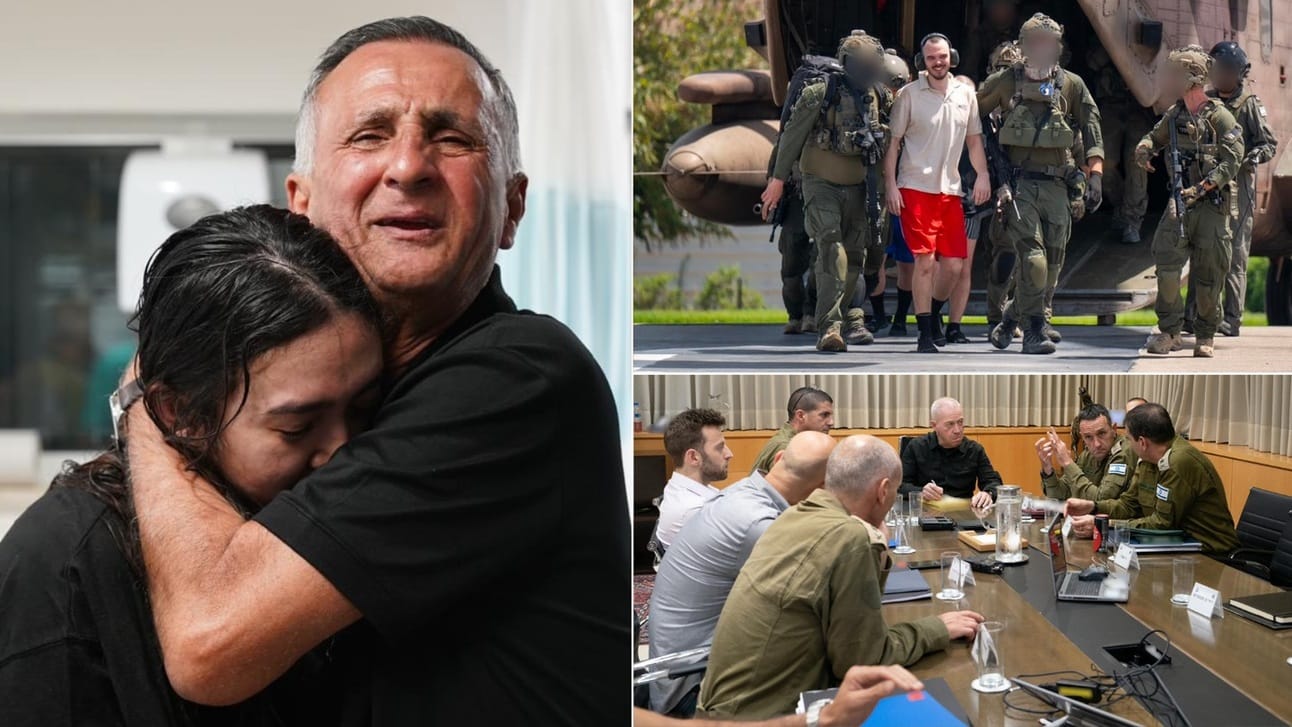
Geopolitical Update: Monday, June 10, 2024:
Israeli Forces Execute Daring Daylight Raid to Rescue Hostages from Hamas, Escalating Tensions in Gaza Conflict

Bottom Line Up Front (BLUF):
This weekend, the Israeli military conducted a highly coordinated and daring operation named "Operation Arnon" to rescue four hostages held by Hamas in the central Gaza Strip. The operation, meticulously planned over several weeks, involved special forces storming two buildings in the densely populated Nuseirat refugee camp. The mission, executed in broad daylight to leverage the element of surprise, saw the successful extraction of hostages Noa Argamani, Almog Meir Jan, Shlomi Ziv, and Andrei Kozlov. However, the operation came at a significant cost, with one Israeli officer, Commander Arnon Zamora, succumbing to injuries sustained during the raid.
The operation began with the approval of Israel's political echelon following weeks of intensive planning and intelligence gathering. On Saturday morning, two commando teams advanced covertly into the Nuseirat camp, using disguises and a humanitarian aid truck to blend in. The forces, equipped with real-time intelligence and live footage from aerial surveillance, identified their targets—two multi-story buildings housing the hostages and guarded by armed Hamas militants. At 1100 hours, the commandos received the final "execute" order. They launched simultaneous assaults on both buildings to prevent the terrorists from retaliating against the hostages. The team rescuing Noa Argamani encountered minimal resistance, swiftly eliminating the guards and securing her safety. In contrast, the second team faced fierce resistance, leading to a protracted gunfight that resulted in Commander Zamora's fatal injury.
As the extraction unfolded, hundreds of armed Hamas fighters quickly converged on the rescue site, escalating the intensity of the operation. Despite facing heavy fire and significant obstacles, the commandos managed to communicate the successful rescue with the code phrase "The diamonds are in our hands." The situation rapidly deteriorated as the rescue vehicle came under attack, prompting Southern Command chief Yaron Finkelman to activate a contingency plan for a hasty extraction. This plan involved helicopters landing deep within Gaza to evacuate the hostages and commandos amidst the chaos. The operation's aftermath saw varying reports of casualties, with the IDF acknowledging civilian deaths but attributing the blame to Hamas for using civilians as human shields.
Context
Operation Arnon came against a backdrop of escalating tensions and violence between Israel and Hamas, a militant group that controls Gaza and has been involved in numerous conflicts with Israel over the years. The hostages—Noa Argamani, Almog Meir Jan, Shlomi Ziv, and Andrei Kozlov—had been abducted during a brutal attack by Hamas on October 7, 2023, at the Supernova music festival near Re’im. The attack, involving around 3,000 Hamas-led militants, resulted in the deaths of 1,200 people and the capture of 251 hostages, marking one of the deadliest days in the conflict's history. The Israeli government and military have since been under immense pressure to secure the release of the hostages and respond to the unprecedented violence.
Operation Arnon was meticulously planned over several weeks, involving advanced intelligence tracking, drills, and model simulations to prepare for every possible scenario. The political echelon gave its approval on Thursday, June 6, in a classified discussion under heavy secrecy. The operation was set into motion on the morning of June 8, with two commando teams launching covertly towards the Nuseirat refugee camp in broad daylight. This decision to move during the day was strategic, aiming to exploit the element of surprise despite the increased risk to the special forces. Disguised and using a humanitarian aid truck for cover, the teams navigated through the densely populated camp, blending in with thousands of Palestinians and avoiding detection by hundreds of Hamas militants in the area. This covert movement was crucial to reaching the two multi-story buildings where the hostages were held. The precision and coordination required for this operation were immense, with real-time intelligence and live footage from Air Force aircraft guiding the teams and ensuring the targets were clear of any suspicious movement. The operation's success hinged on the simultaneous storming of both buildings, intended to prevent the terrorists from reacting and endangering the hostages.
Assessment
The recent Israeli operation to recover four hostages from Hamas captivity marks a significant shift in the ongoing conflict between Israel and Hamas. This bold and highly coordinated rescue mission demonstrates Israel's resolve to take decisive and direct action against Hamas, bypassing prolonged negotiations and potential ceasefire terms that might be unfavorable. The successful extraction of the hostages under such difficult conditions shows Israel's capability and willingness to engage in high-risk operations to secure its citizens, despite the inherent dangers and potential for escalating violence. This operation not only subverts Hamas's leverage in ceasefire negotiations, where hostages are often used as bargaining chips but also sends a clear message about Israel's strategic priorities and operational capabilities.
Hamas's response to the operation, involving an immediate and intensive media campaign highlighting inflated civilian casualty figures, aims to sway international opinion and pressure Israel into halting further operations. By presenting a narrative of widespread civilian suffering and loss, Hamas seeks to garner sympathy and leverage international diplomatic pressure to restore a ceasefire more favorable to its position. However, Israel's counter-PR efforts, which emphasize Hamas's tactics of using civilians as human shields and housing hostages within civilian populations, aim to neutralize this narrative. Israel's portrayal of Hamas as a manipulative force endangering its people for strategic gains is likely to resonate with key international actors who are already skeptical of Hamas's methods. Consequently, while Hamas's PR efforts might generate immediate media attention, they are unlikely to achieve long-term success in pressuring Israel, given the robust counter-narrative being put forth. This dynamic underscores the evolving nature of the conflict, where information warfare and public perception play critical roles alongside traditional military engagements.

Stay safe out there
